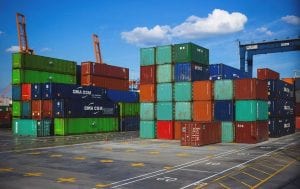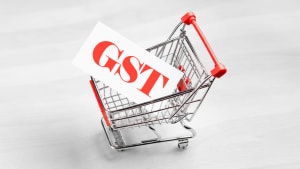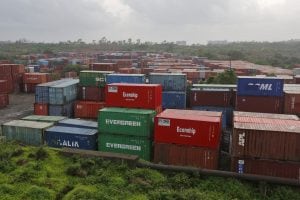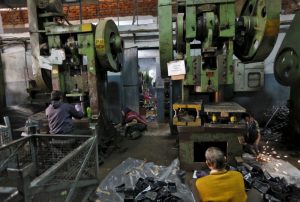FinCEN files: Suspicious transactions
Summary
FinCEN, the US government bureau engaged in preventing money laundering and other financial crimes is said to have received more than 2,100 SARs filed during the period 1997- 2017.
The International Consortium of Investigative Journalists (ICIJ), a US-based non-profit organisation has built a formidable reputation with its exposes about cross border fronts created to launder money. ICIJ has again hit the headlines with data of suspicious activity reports (SARs) sent by banks to FinCEN (Financial Crimes Enforcement Network). FinCEN, the US government bureau engaged in preventing money laundering and other financial crimes is said to have received more than 2,100 SARs filed during the period 1997- 2017. The transactions said to be in excess of $2 trillion spread across 88 countries including India again highlight the vulnerability of financial institutions to being misused for nefarious purposes.
Criminals enter the business of crime to make a profit. Having earned profit through criminal activity-be it evading taxes, smuggling, drug trafficking, embezzlement, there is the fear of detection. The process of laundering (cleansing) the ‘dirty’ money commences. The classic steps of placement, layering, and integration follow wherein the illegal proceeds are introduced into the financial system as legitimate. This is done typically, by investments in real estate, gold, or trade-based money laundering (TBML) recognised as a major vehicle for moving illicit funds.
Money laundering impacts the very integrity of financial systems. It damages the economy of a country. It encourages crime. If ‘laundered’ proceeds are available easily it generates more crime. Terrorism thrives on laundered money.
Every government is concerned because of the sheer amount of criminal money suspected to be laundered. The United Nations Office on Drugs and Crime (UNODC) estimated that in 2009, criminal proceeds amounted to 3.6 percent of global GDP, with 2.7 percent (or $1.6 trillion) was being laundered.
The Financial Action Task Force on money laundering (FATF) was established by the G-7 Summit in 1989 to develop a coordinated international response to this menace. One of the first tasks of the FATF was to develop recommendations that set out measures national governments should take to counter money laundering. Countries are required to introduce anti-money laundering laws and establish a financial intelligence unit (FIU).
Banks were expected to maintain “know your customer’ files and report suspicious activity to law enforcement agencies (LEA). This is in keeping with the classic investigator’s credo—follow the money trail and curb crime by confiscating the proceeds of crime. It is in this background that banks have furnished SARs to FinCEN-it is a different matter that these are supposed to be confidential!
India enacted the Prevention of Money Laundering Act (PMLA), in 2003. (It became a member of FATF in 2010) Anybody who attempts to indulge in any activity connected with the proceeds of crime and projecting it as an untainted property is said to have committed the offense of money laundering. PMLA prescribes obligation on banking companies, financial institutions, and intermediaries for verification and maintenance of records of the identity of all its clients and also for furnishing suspicious transaction reports (STRs) to the Financial Intelligence Unit (FIU-IND).
The suspicious transaction has been defined to mean any transaction (including an attempted transaction) whether or not made in cash which, to a person acting in good faith gives rise to a reasonable ground of suspicion that it may involve the proceeds of crime. It includes cash transactions and cross-border wire transactions above various thresholds and all transactions in counterfeit notes.
FIU receives, processes, analyses, and disseminates information relating to suspect financial transactions to the LEAs. As per their latest annual report FIU has received as many as 1,39,75,397 Cash Transaction Reports, 3,23,162 STRs, 1,07,19,253 cross border wire transfer reports (CBWTR) in 2018-19. The FIU has the formidable task of analysing the reports and disseminating the inputs to LEAs.
The Directorate of Enforcement (ED) has been nominated as the authority for search, seizure, attachment of property, even if it is abroad, involved in money laundering. As per the performance report of ED the value of assets under attachment is valued at nearly Rs 30,000 crore.
A suspicious transaction report by itself is nothing more than that – prima facie suspicious. There is obviously an element of subjectivity. A lot depends upon how the regulator has sensitised the reporting entities to ‘smell ‘a suspicious transaction. Red flag indicators based on the feedback given by the LEAs is the key. The challenge which FIU faces is that they are inundated with transactions deemed to be ‘suspicious’—the reporting entities who can be penalised for not reporting a suspicious transaction take the easy way out and report just about everything. There is a danger of “bad” transactions slipping out.
FATF mandates cooperation. FinCEN would have perhaps informed FIU of the transactions involving Indian banks and their corresponding banks. In fact, even the Indian Banks ought to have informed FIU in their CBWTR’s.
There is greater transparency required regarding the outcome of investigations—both as an assurance to the general public at large that the Government is serious about coming down on money laundering and also as a signal to potential fraudsters that siphoning of funds will not be tolerated. Incidentally, while there is no information about the outcome of the investigation done in India in the case of the Panama papers, a US court has recently sentenced a US citizen for money laundering based on the Panama Papers investigation.
The Enforcement Directorate has its work cut out.
—Najib Shah is the former chairman of the Central Board of Indirect Taxes & Customs. The views expressed are personal
Read his other columns here

Elon Musk forms several ‘X Holdings’ companies to fund potential Twitter buyout
3 Mins Read
Thursday’s filing dispelled some doubts, though Musk still has work to do. He and his advisers will spend the coming days vetting potential investors for the equity portion of his offer, according to people familiar with the matter


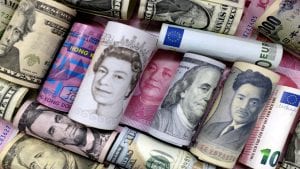






 Listen to the Article
Listen to the Article  Daily Newsletter
Daily Newsletter





